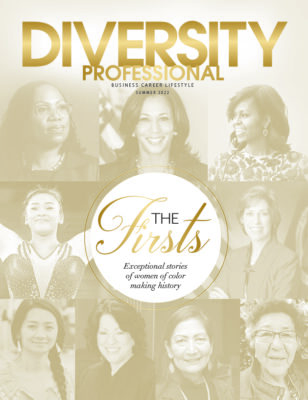THE WORKPLACE IS CHANGING AS BOOMERS MOVE ON
Collaborative leadership styles benefit new era of work.
Boomers are retiring. As millions move on from their senior corporate roles, a transition between generations is in progress as rising millennial leaders take up their batons. Meantime, we are going through a major period of flux with the surge of technology implementations driving new business models, operational systems, and work arrangements—the ‘what’, ‘how’, and ‘where’ of work is evolving rapidly. The changes in leadership are facilitating these workplace transformations as new attitudes and approaches support emerging workplace environments and improved employee experiences.
The Future of Work arrived in 2020 with the accelerated digitalization of businesses and integration of new platforms and applications catalyzed by pandemic restrictions. As crisis conditions receded, it is understandable that seasoned executives have been pushing to return to traditional, more controllable, and familiar settings and reinstate previous operating models and work routines. However, new, younger leaders—often with fewer entrenched habits and more comfort with technology—are better able to understand and embrace the seven key characteristics of the new era of work:
“Leaders are now managing more teams collaborating across disciplines and locations to DEVELOP AND TRIAL NEW IDEAS rapidly, requiring use of project management tools and enhanced interpersonal skills.”
Nimble: To respond at the faster pace of marketplace developments, top down, centralized decision-making is too slow. New leaders are adopting more oversight roles evolving from boomers’ conventional ‘Command and Control’ styles to push more responsibility down and out closer to the front line. Reducing hierarchical gaps and ongoing course corrections allows organizations to be nimble during unpredictable economic times. As an executive or manager, you can check in more frequently with team members and employ a coaching style which is well-suited for dealing with changing customer behaviors and conditions.
Individualized: Sophisticated technologies are enabling us to target individual potential buyers, empathizing with each to understand and respond to their specific challenges and convert them. The new business climate also requires managers to engage each employee and help them work closely with others on more complex business problems. Boomers’ traditional undifferentiated management approach worked well enough in slower more static circumstances. Now it is important for leaders to recognize and adjust for every employee’s different skills, work preferences, and oversight needs.
Flexible: Boomers’ replacements are more easily bringing open mindsets to their senior roles as critical decisions are being made about workplace flexibility for knowledge and fixed-location workers. Realization that offering flexible options stimulates employee engagement and supports balanced lifestyle choices and retention gives new management the patience for months of ongoing iterations. New, more customized (and compromised) choices require testing and refining. New leadership can bring fresh approaches and ideas to optimize ‘remote first’ work habits. You can also emphasize office-based activities that build relationships and help younger employees connect across levels of seniority.
Projectized: The nature of work has been changing as digitized operations morph linear, static, and routine independent tasks into more team-based, non-routine, and networked projects. Leaders are now managing more teams collaborating across disciplines and locations to develop and trial new ideas rapidly, requiring use of project management tools and enhanced interpersonal skills. With fewer executives who are ambivalent or dismissive about culture, work environments can be reimagined. Leaders are responsible for nurturing trust-based inclusive corporate communities that unite employees across geographies.
Diversified: Many baby boomers entered the workplace anticipating and enjoying a decades’ long continuous, linear, and compounding career. New executives’ multiple careers and trajectories have been less obvious and stable, more meandering and disjointed, as well as encompassing diversified employment arrangements—full-time, part-time, consulting, and freelance. They might be on their second or third career already with more experience of portfolio careers. Rising leaders can be smart about drawing from and supporting the extended talent pool that extends beyond increasingly porous company boundaries.
Healthy: Historical stigma about mental health can be greatly reduced as upcoming leaders have much sensitivity to the lingering and ongoing anxiety and depression of so many, especially younger, workers. Generation Zs have suffered disproportionately during the pandemic from disruption to their education and issues such as isolation, layoffs, and income insecurity. Be purposeful in efforts to establish holistic well-being initiatives which are essential to support employees during this often-unsettling period of change.
Human-centric: No leader now can have all the answers, meaning every employee’s inputs are important. Empathetic, inclusive cultures are essential to foster safe spaces and belonging, encourage participation and productive communication and collaboration. To compete effectively, as a transitioning or upcoming leader, integrate empathy—the ability to understand others’ perspectives and experiences— as a cultural value, promote inclusive, open mindsets, and practice empathy skills.
Workplaces are evolving in significant ways to adapt for the new era of work and are further influenced by the generational shift and replacement of traditional practices. We can all benefit from learning and sharing more inclusive and collaborative leadership styles to help us navigate the more complex and challenging issues of today.









